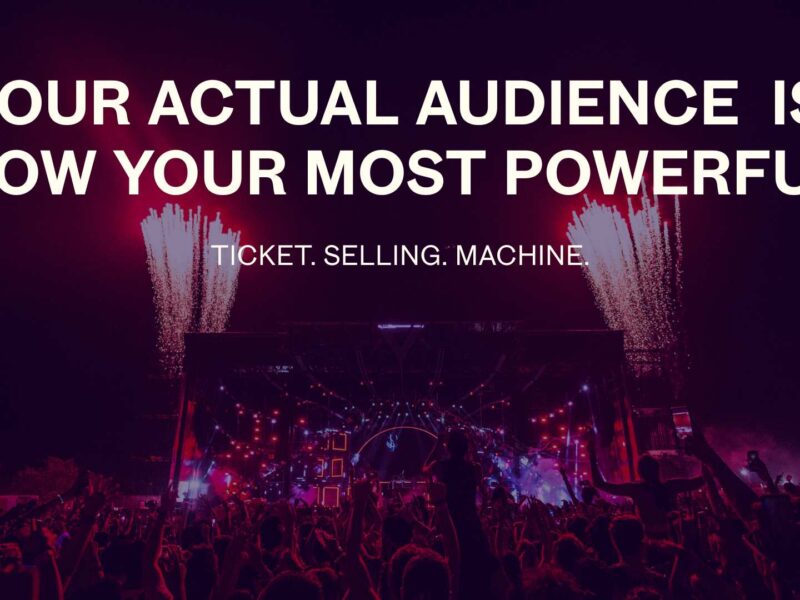When you think of printed versus digital program books, which is the better option?
Answer: neither.
That’s because every patron is different, and until you can crack the code of reading minds, you’re going to have to make the effort to please both of these preferences.
So, whether printed or digital program books play the primary role of relaying information about an upcoming event, only your patrons will tell. And if you’re 100% one way or the other, you may want to think again because you’re going to miss communicating with half your audience.
By going with a mix of digital and printed program books, you get to please every preference, while significantly slashing costs!
Here are key reasons why a hybrid program book model may be the best choice for your performing arts organization.
Always the Perfect Quantity
Printed program books have traditionally used the “print and hope system.” Under this system, the organization orders enough printed program books to cover all seats in their venue multiplied by the number of performances for that specific run.
The “hope” part of this system always ends up costing performing arts organizations thousands of dollars in unused printed program books. That’s because, unfortunately, the house rarely gets sold out all the time. And this is for just one performance! Multiply this by the season, and it quickly becomes a money pit, not to mention a ton of landfill waste.
Digital program books can help you cut down or eliminate exorbitant printing costs by providing a cost-effective way to offer alternatives to performing arts organizations. By printing a small run of printed programs you can please those who prefer paper or aren’t smartphone savvy. Then you never have to worry about having too little or too much.
Always the Perfect Experience
It used to be that you could attract attention with splashy headlines or celebrity branding. Those days are gone now that mobile phones and social media have become drivers of an on-demand economy. It can be challenging to connect with patrons and keep them engaged in an ever-changing, dynamic, and distracting environment.
While printed program books have a history within the performing arts, they, unfortunately, have always been expensive, and they are usually one and done.
Digital program books offer the unique ability to engage audiences in ways paper can’t. You can directly connect with your audience at the right place at the right time, whether by email, text, social media, or the web. When used in conjunction with printed programs, audiences are given choices and encouraged to connect. Think of a call-to-action (CTA) on the printed program that links to the digital program or special offers on upcoming performances. It makes perfect sense that outstanding patron experience is directly tied to revenue. Nobody comes back to go through another bad experience, right?
Always the Perfect Measure
Printed program books have always been difficult to measure their impact, particularly when tracking purchases and other interactions. Performing arts program books are given to patrons who’ve already bought a ticket to an event. Most likely, you’ll record the number of tickets shown to gain entrance into the performance. Beyond that, a printed program book doesn’t offer much about your patrons. That is unless you integrate it with digital.
Digital program books used as a supplement to the paper versions can work wonders for gaining more insight into your efforts. A digital program book could be set up to collect email or mobile phones numbers to help you build a marketing list. It’s quick and efficient. You can offer people something special in exchange for opting in, such as a discount code. When done right, you can track and measure behaviors and conversions that result from both the print and digital program books. This provides a way to see what’s working and what needs to be tweaked for a better response.
Start Pleasing Everyone
We practically drink, eat and breathe digital, but you don’t have to ditch print. Supplementing your print runs with digital program books is like a match made in heaven. A hybrid print/digital approach can save on costs while enhancing audience engagement. Plus, with digital program books, you’ll never run out or be stuck with extra printed program books again. You can also create a better experience by measuring the impact of your performing arts program books. It’s a win-win situation that results in perfect harmony between digital and print… and, ultimately, between you and your audience.
We offer a range of plans for digital program books. No matter how big or small, we’ve got something for every type of entertainment organization. Sign up for our free Community version of Audience Access today to start your perfect harmony!



The hybrid approach definitely seems to be the best way to go, because some people still prefer reading off of paper and/or want the printed program as a souvenir. My question is: what percentage of the total number of expected attendees should I use as the basis for the quantity of printed program books?
Thank you for your insightful question. The hybrid approach indeed seems to be the best way forward, catering to the diverse preferences of our audience.
In response to your query, we recommend a 50% reduction in both the print run and page count of program books. This suggestion is based on factors such as environmental considerations, cost-effectiveness, and the growing trend towards digital content. Striking this balance allows for a tangible souvenir for those who prefer it while embracing the benefits of a digital companion.
The success of this transition greatly depends on how well the digital program is promoted within the venue. We encourage organizations to actively communicate the availability and advantages of the digital companion to attendees. This not only addresses potential concerns among patrons but also ensures a positive experience for advertisers who have secured placements.
Should you have any more questions or if there’s anything else you’d like to discuss, feel free to reach out. We’re here to assist you in navigating the transition to a hybrid approach successfully.